We’ve got an architecture and we’ve got a basic low voltage tube inverter design, next we gotta figure how to take that inverter building block and transform it into our basic block diagram.
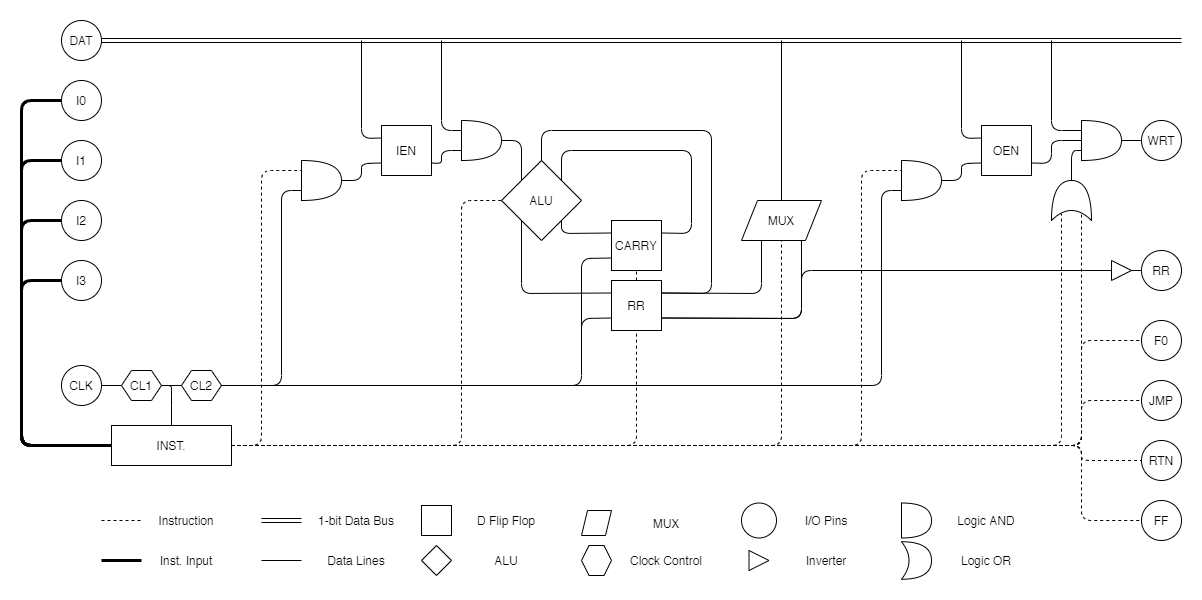
I love block diagrams, especially CPU architecture diagrams, but they’re not particularly helpful in telling you exactly how to build what you have to build. I know I need things like an ALU and a bunch of D Flip Flops, but how do I get there with just a single inverter? Well, an inverter is really just a simple logic gate. Whatever input is coming in, it inverts it to the opposite.
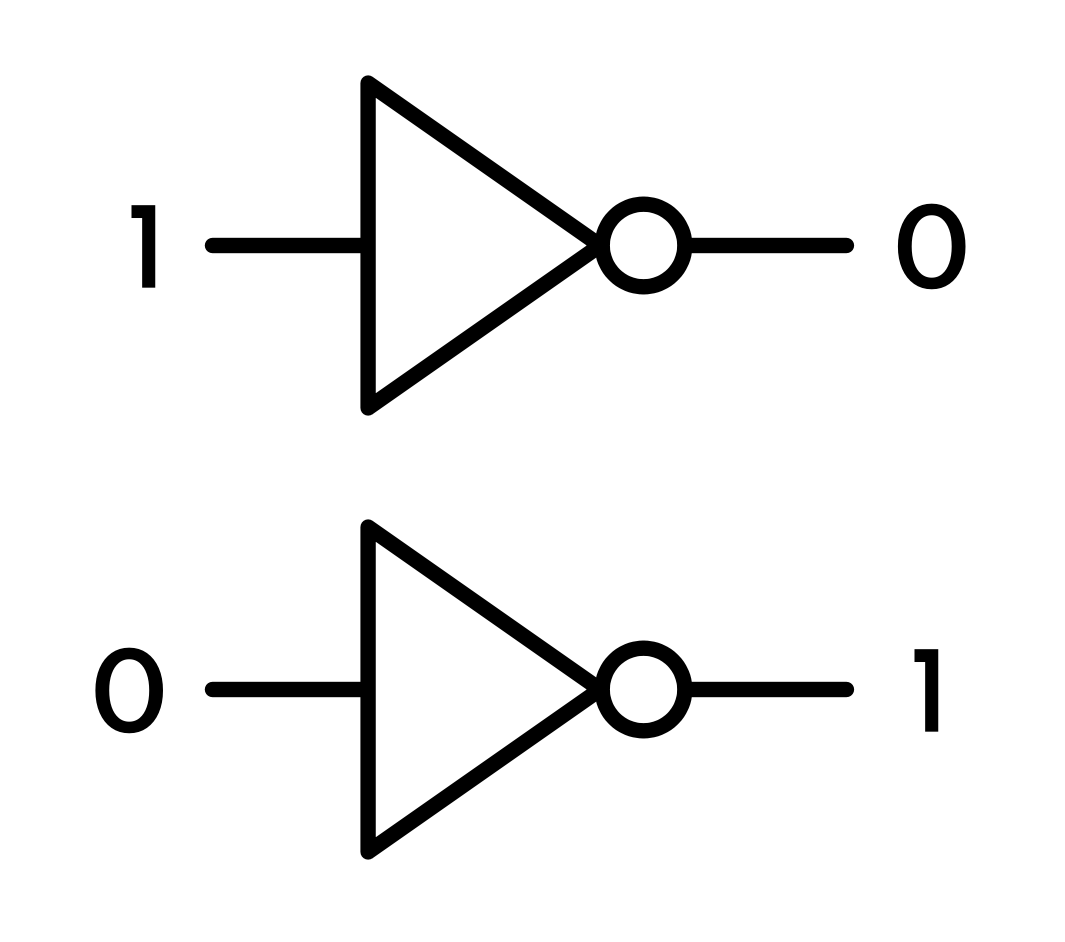
There are, in total, 8 logic gates we easily have at our disposal:
Inverter, Buffer, AND, NAND, OR, NOR, XOR, and XNOR
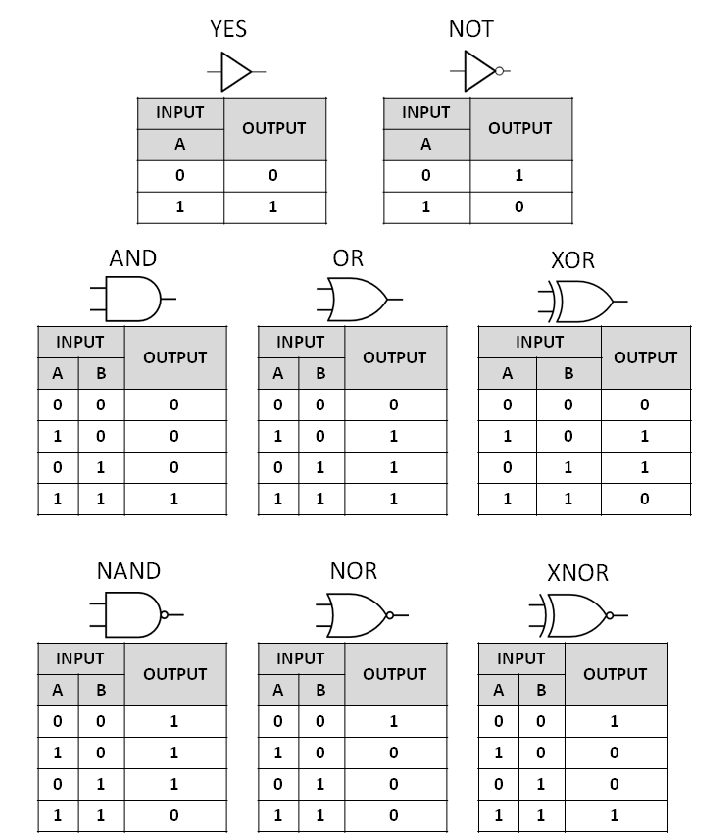
Inverter: If the input is low, the output is high, and vice versa
Buffer: Passes the input to the output, but makes it stronger
AND: If both inputs are high, the output is high, otherwise, the output is low
NAND: Same as an AND gate, except the output is inverted
OR: If either or both inputs are high, the output is high
NOR: Same as an OR gate, except the output is inverted
XOR: If both inputs are high or both inputs are low, the output is low
XNOR: Same as an XOR gate, except the output is inverted
Out of all these gates though, the NAND and NOR gates are by far the most important, and that’s because they’re universal gates. That means that any other logic gate can be made from a combination of just NOR gates or just NAND gates! And famously, the Apollo Guidance Computer was built almost exclusively using dual 3-input NOR gate ICs.
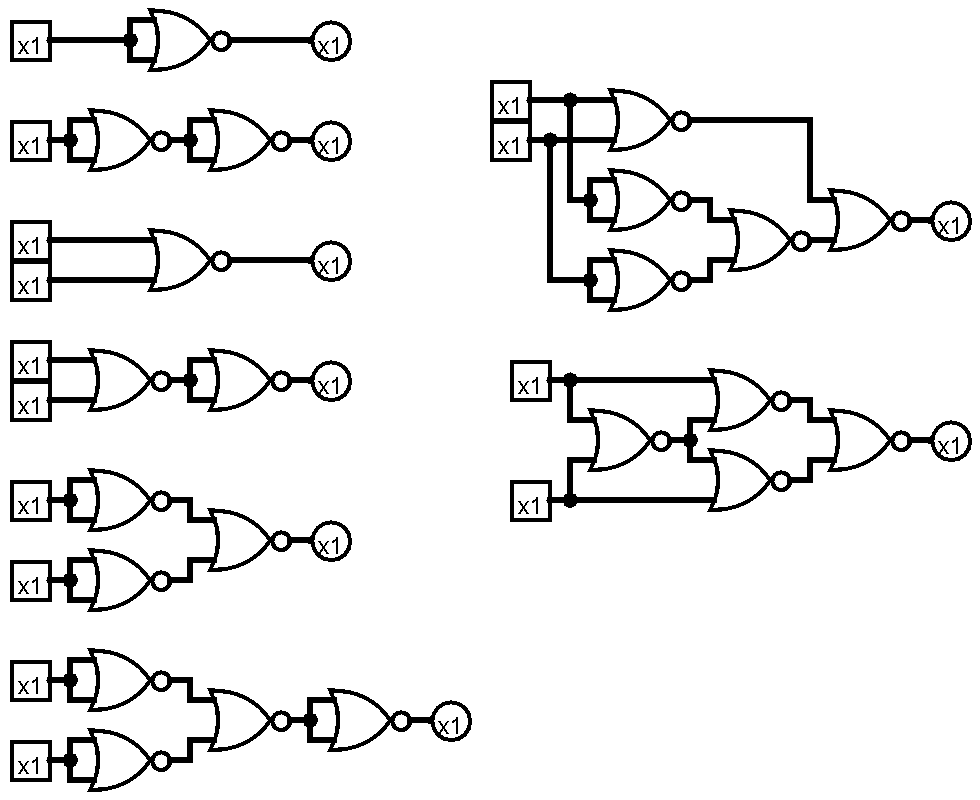
So, how do we make a NOR gate? Well, it’s just an OR gate with the output inverted, which means we can just stuff our inverter design on the end of an OR gate. How do we make an OR gate? That’s even easier, we just use two diodes!
The 6AU6 makes an excellent low voltage inverter, and if we pair this with a 6AL5 dual diode, we can get a perfect, all vacuum tube, low-voltage NOR gate.
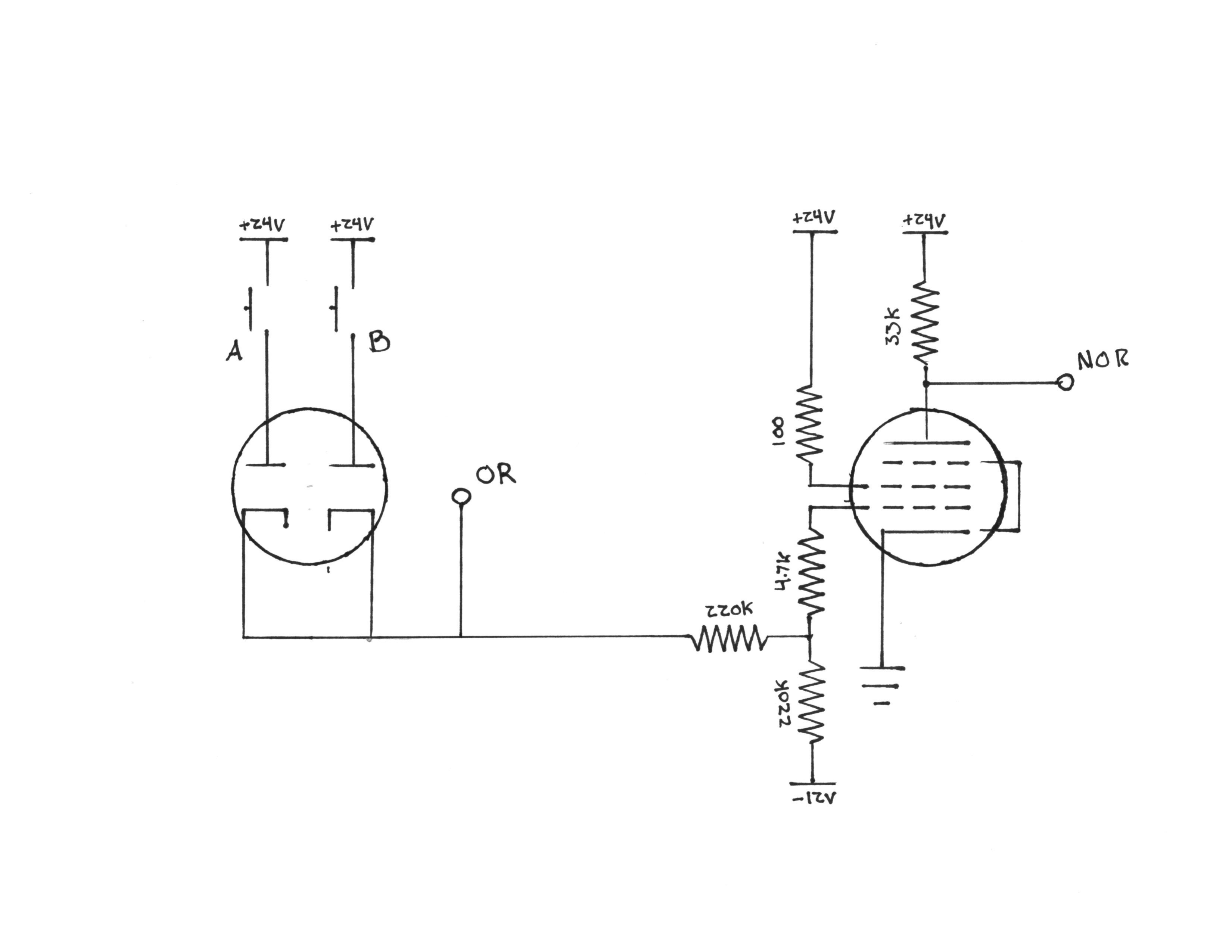
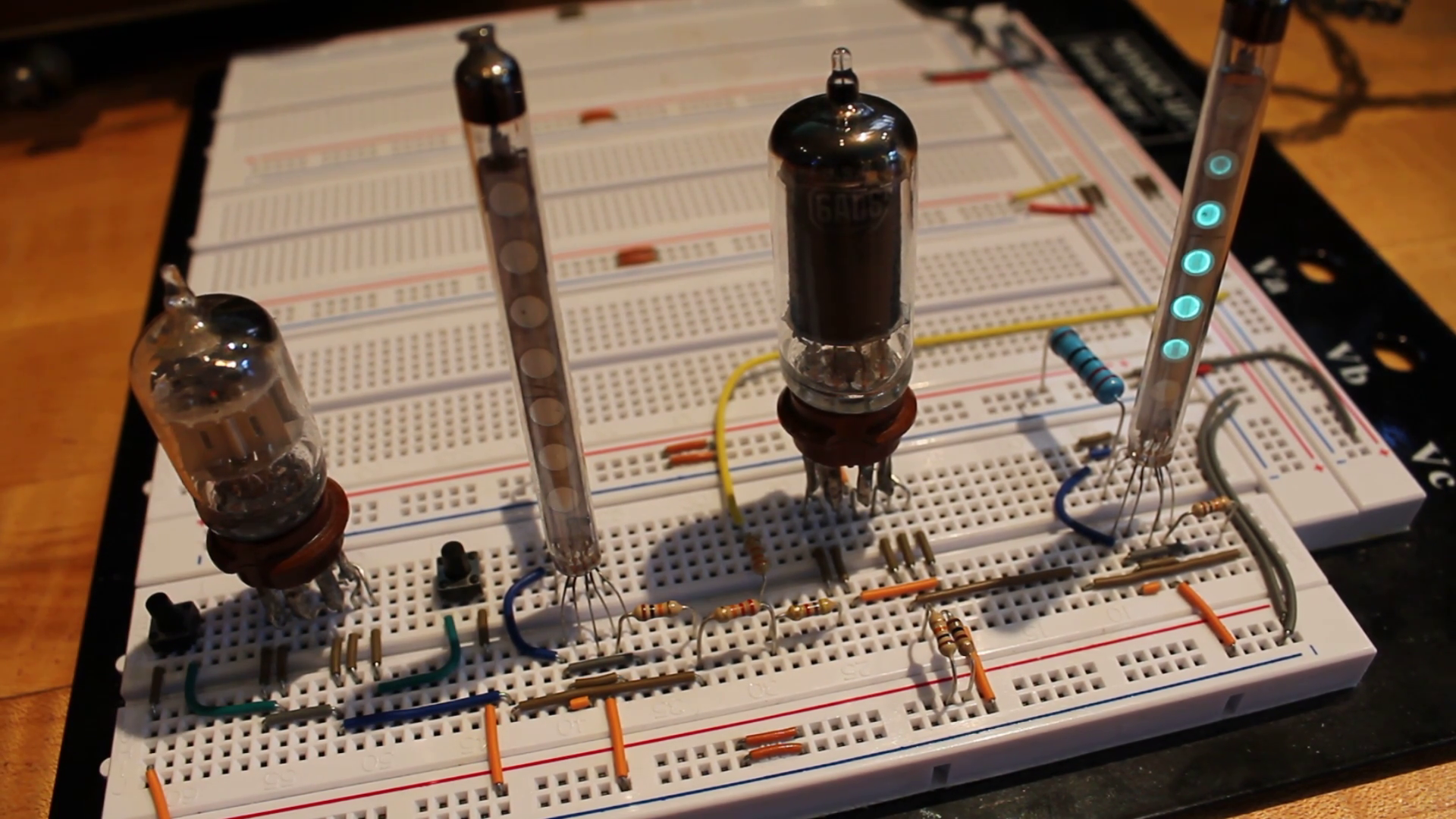
But, as much as I love the idea of an all tube NOR gate, for the number of NOR gates required to actually make this thing work, the physical space requirements and filament power requirements would get a little intense. So, instead, let’s use two silicon diodes in place of the 6AL5.
But, that’s cheating!
Yes and no. Sure, it’s not a fully hollow state design, but vacuum tube computers often used silicon diodes in conjunction with tubes in the late 50s. The IBM 604, 650, 705, 750 and many other machines made use of silicon didoes in some fashion or another. The LGP-30 is perhaps my favorite example though, it used just 113 tubes and 1,450 silicon diodes, working primarily on diode logic.
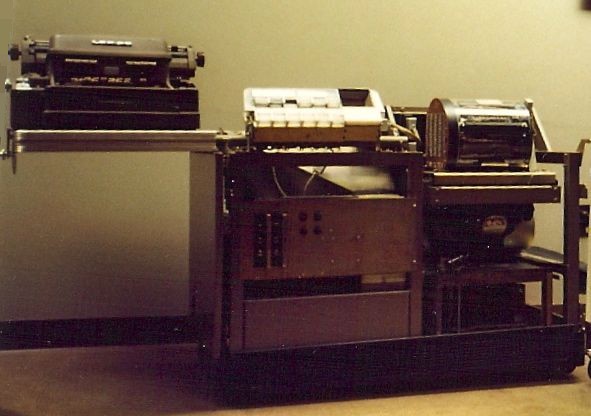
Now that we’ve got our NOR gate, it’s time to sit down and figure out how to build this entire thing out of just NOR gates! And this was the result:
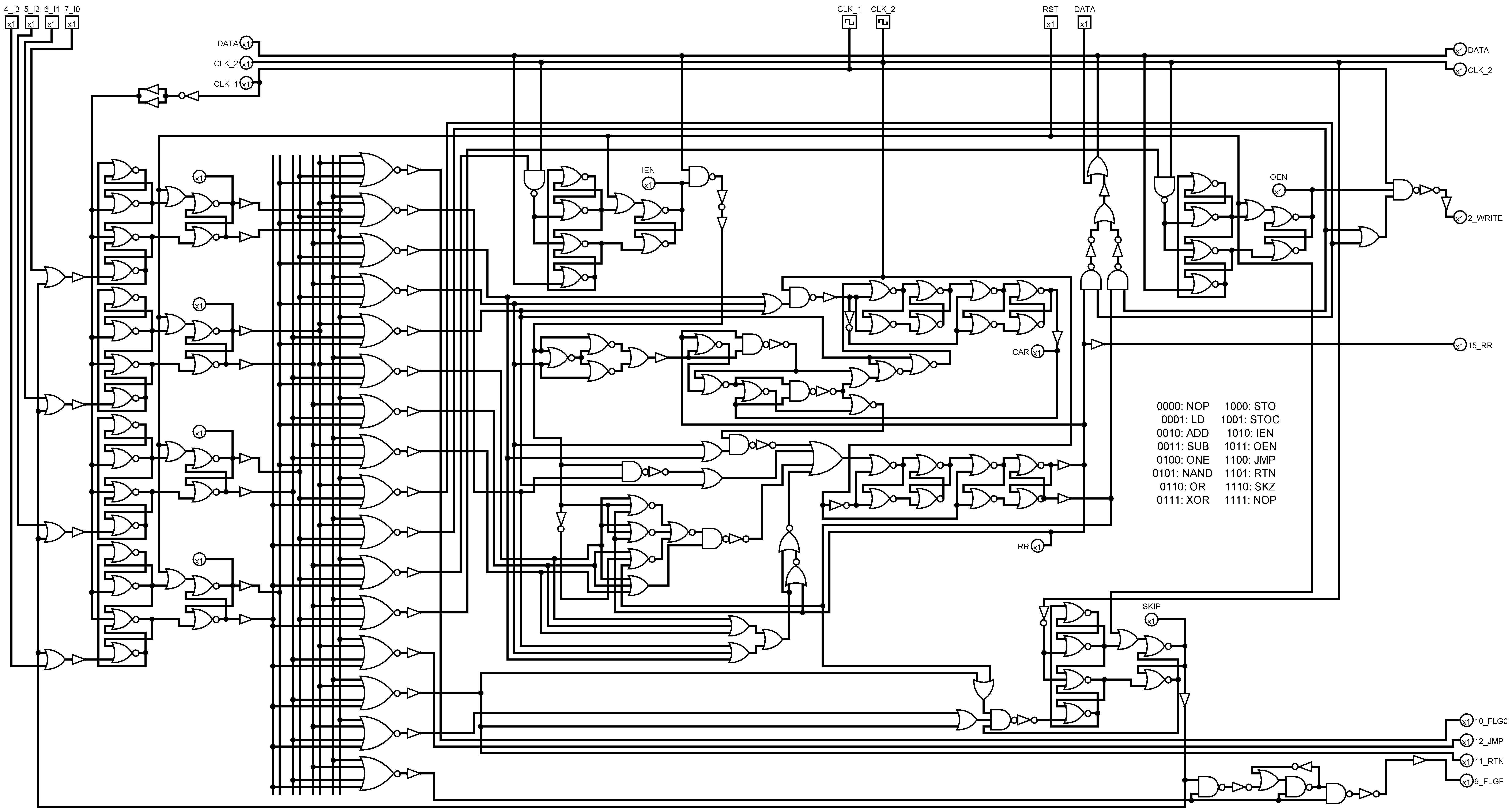
We’ll dissect this in much more detail in the next log!
Thanks for reading!
 Usagi Electric (David)
Usagi Electric (David)
Discussions
Become a Hackaday.io Member
Create an account to leave a comment. Already have an account? Log In.